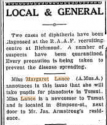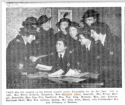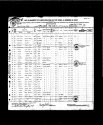- Joined
- Feb 4, 2022
- Messages
- 943
- Reaction score
- 5,389
This is interesting…
A Crucial Numismatic Component
Metrology — the study of weights and measures — has always been something that classical numismatists need to understand. It is astonishing to many beginning collectors that ancient mints were able to control the weight of precious metal coins to within a few milligrams plus or minus (for comparison, an aspirin tablet weighs 350 milligrams). “Base metal” or copper alloy coins were generally over-valued in terms of their metal content so there was no need to control the weight of each piece so precisely.
The exact weight of a coin is usually irrelevant to collectors of modern machine-made coins, which do not vary appreciably from well-established standards. But the weight of an ancient coin is a critical part of its description, possibly helping to establish its authenticity–as well as its date and origin. Today we weigh coins on digital electronic scales that give us a readout at the press of a button. But in ancient mints and markets, coins and bullion were weighed on simple pan balances, using sets of official weights.
Ancient commercial weights, particularly those that were used to weigh coins, are therefore of interest to many collectors.
CoinWeek Ancient Coin Series: Collecting Ancient Weights
A Crucial Numismatic Component
Metrology — the study of weights and measures — has always been something that classical numismatists need to understand. It is astonishing to many beginning collectors that ancient mints were able to control the weight of precious metal coins to within a few milligrams plus or minus (for comparison, an aspirin tablet weighs 350 milligrams). “Base metal” or copper alloy coins were generally over-valued in terms of their metal content so there was no need to control the weight of each piece so precisely.
The exact weight of a coin is usually irrelevant to collectors of modern machine-made coins, which do not vary appreciably from well-established standards. But the weight of an ancient coin is a critical part of its description, possibly helping to establish its authenticity–as well as its date and origin. Today we weigh coins on digital electronic scales that give us a readout at the press of a button. But in ancient mints and markets, coins and bullion were weighed on simple pan balances, using sets of official weights.
Ancient commercial weights, particularly those that were used to weigh coins, are therefore of interest to many collectors.
CoinWeek Ancient Coin Series: Collecting Ancient Weights











